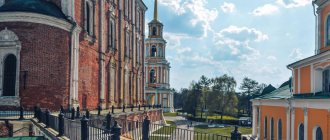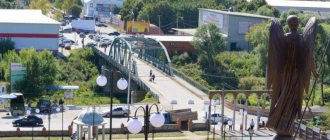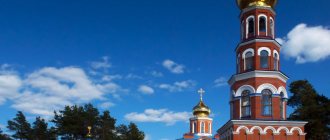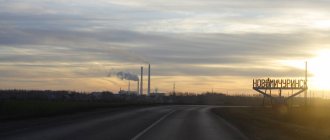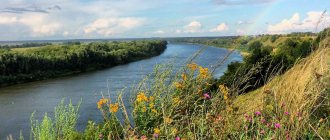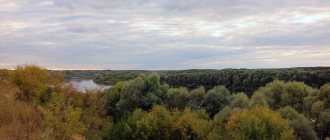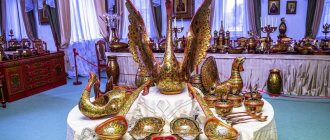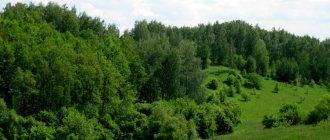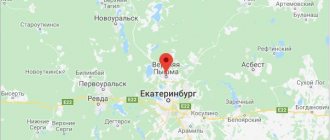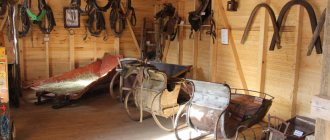Description and geographical location
Mount Skopin is located 110 km from Ryazan and 270 km from Moscow. The Verda River flows through the entire city.
Divided into 7 settlements forming an urban district. Since 2015, the head has been Oleg Aseev. The local population is 26 thousand people.
You may need information about where to eat good pizza in Saransk.
Administrative division
The territory of a municipality includes the territories of municipalities granted the status of urban settlements :
1. Paveletsk urban settlement (the administrative center is the working settlement of Pavelets). The Paveletsk urban settlement of the Skopinsky municipal district includes 11 settlements: the working village of Pavelets, the villages of Yuzhny, Krasnaya Derevnya, the villages of Kremlevo, Mshanka, Pavelets - 2 stations, the villages of Kremlevo, Vyazovenka, Delekhovo, Khvoroshchevka, Pavelets.
2. Pobedinskoye urban settlement (administrative center - workers' settlement Pobedinka). The Pobedinskoye urban settlement of the Skopinsky municipal district includes 9 settlements: the working village of Pobedinka, the villages of Bolshak, Otrada, Poplevinsky, the villages of Pobednoye, Sekirino, Chulkovo, the villages of Podmakaryevo, Kochugurki.
The territory of a municipality includes the territories of municipalities granted the status of rural settlements :
- Voslebovo rural settlement (administrative center - the village of Voslebovo). The Voslebovo rural settlement of the Skopinsky municipal district includes 11 settlements: the villages of Voslebovo, Verderevo, Kushunovo, Novoe, the village of Lesnichestvo, the village of Briketnaya station, the villages of Vozdvizhenka, Dmitrievsky Khutor, Letovo, Savilovka, Svistovka.
- Gorlovskoye rural settlement (administrative center - the village of Gorlovo). The Gorlovskoye rural settlement of the Skopinsky municipal district includes 21 settlements: the villages of Gorlovo, Novo - Aleksandrovo, Dmitrievo, Rudinka, Trinity - Orlovka, Almazovo, Bogoslovo, Nyukhovets, Petrushino, Zatvornoe, Muravlyanka, Nagishi, Klekotki, Katino, the village of Krasny May, the village of Katino station, the villages of Surovtsy, Pisarevo, Lvovka, Kupchaya, Izmailovka.
— Ilyinskoye rural settlement (administrative center is the village of Ilyinka). The Ilyinsky rural settlement of the Skopinsky municipal district includes 8 settlements: the villages of Ilyinka, Vysokoye, Kazinka, Bereznyagi, Lazinka, Mshanka, the village of Shirokiy, the village of Lazinka station.
— Kornevskoye rural settlement (administrative center is the village of Kornevoye). The Kornevskoye rural settlement of the Skopinsky municipal district includes 8 settlements: the villages of Kornevoye, New Keltsy, Knyazevo, Petrushino, Pupki, the villages of the Rest House, Osinovo-Shilovo, and the village of Velemya.
- Polyany rural settlement (administrative center - the village of Polyany). The Polyanskoye rural settlement of the Skopinsky municipal district includes 5 settlements: the villages of Polyany, Ermolovo, Dmitrievo, the villages of Periki, Svinushki.
— Uspenskoye rural settlement (administrative center is the village of Uspenskoye). The Uspenskoye rural settlement of the Skopinsky municipal district includes 21 settlements: the villages of Uspenskoye, Nemerovo, Lopatino, Gremyachka, Rozhdestveno, Nikolo - Skopin, Mokhovoye, the villages of Dozorovka, Moskovsky, Pokrovsky, Rudinka, Svoboda, Smekalovka, Sovetsky, Krasny, the village of Voslebovo station , villages of Demenshino, Ryumki, Galino, Grivtsy, Voronovka.
— Shelemishevskoe rural settlement (administrative center is the village of Shelemishevo). The Shelemishevskoye rural settlement of the Skopinsky municipal district includes 34 settlements: the villages of Shelemishevo, Borovoe, Gorodetskoye, Dymovo-Volkonskoye, Dymovo-Gosudarstvennoye, Kostemerevo, Novobarakovo, the villages of Polyanskie Vyselki, the central branch of the Zheltukhinsky state farm, the villages of the Zheltukhino, Govorovo stations, villages Gudovka, Zhuravlikha, Konyukhovo, Moskovka, Naumovo, Ulanovo, Urakovo, Bolshaya Kosyrevka, Govorovo, Gorelovka, Gusilovka, Degtyarka, Dubrovschina, Zheltukhino, Ivankovo, Klyucherevka, Kozlovka, Kondaurovka, Kuzminka 2, Leninka, Shelemishevskie Khutora, Petrovka, Ranovka.
Name
There are three versions of the origin of the name. Some historians closely associate the settlement with the Russian princely family of the Skopins-Shuiskys. Others claim that it is based on a legend about a bird of prey of the hawk family called the osprey. Still others are sure that the name is just an old Russian nickname for a thrifty person (from the word save, save).
Local residents also claim that their city was founded by a stingy man who was able to “successfully invest and increase his fortune.” From the thoughts of linguists it follows that the word “skop” is an outdated synonym for the words “warehouse” and “stock”. Wikipedia points to another version of the origin of the name - from the word “skopova” - this is how a person who was elected as a representative of the village at a volost meeting was sometimes called.
Brief history of the city
It has been scientifically proven that the local lands were inhabited back in the Neolithic era. Archaeologists have found mammoth bones and human remains here. The first settlement appeared approximately in 1140 - 1155. Written references date back to the 16th century; they stated that Skopin was the patrimony of the boyar family of the Romanovs. In 1605, the settlement was surrounded by a wooden fortress. Since the 17th century it has been called Skopinskaya Sloboda. Was part of the Azov province.
Officially received city status in 1778. Emperor Alexander I visited it. Since the 19th century, the economy has been actively developing, and trade has been on the rise. During the Great Patriotic War, the city was recaptured from enemy attacks in 3 November days in 1941. During the Soviet period, Skopin became the industrial center of the Ryazan region, new plants and factories were built, hundreds of jobs were created.
City of heroes of the Great Patriotic War
Skopin, Ryazan region, is the first city that was liberated from the German invaders, and the Ryazan region is considered the first in the number of heroes of the Great Patriotic War who fought for their homeland.
This is interesting: according to statistics, 1 person out of 717 Skopinos who fought became a Hero of the Soviet Union.
The occupation lasted from November 25 to 28, 1941. During this relatively short period of time, the Nazis managed to partially destroy and plunder the city, but the courage and heroism of the Soviet people was enough to free Skopin and destroy the enemy.
Industry
The number of industrial enterprises in 2012 was 8 units. Almost all production in the region falls on the share of production of vehicles and equipment.
The largest enterprises in the region:
• JSC "Skopinsky Automotive Aggregate Plant"
Address: 391843, Ryazan region, Skopinsky district, village. Chulkovo.
Tel: (49156) 5-30-21.
Fax: (49156) 5-30-00
Year of creation: 1962.
The company is a leading manufacturer of struts, shock absorbers and gas springs in Russia. It is an exclusive supplier to the leading car assembly lines in Russia: JSC AVTOVAZ, GM-AVTOVAZ, GAZ, UAZ, IzhAvto, and shock absorbers for GAZ, VAZ, Moskvich cars. In 2012, new equipment was purchased and introduced, and the production of new products for the LADA GRANTA car was mastered.
• LLC Skopinsky Sand-Sand Brick Plant
Address: 391846, Ryazan region, Skopinsky district, Oktyabrsky village.
Tel.: (49156) 74-4-44.
The company produces sand-lime brick.
• RZSM Stroymash - Center LLC
Address: 391844, Ryazan region, Skopinsky district, r.p. Pobedinka.
Tel..
The main types of products are concrete pumps, cast iron, spare parts, saw chains.
• LLC Skopinsky Meat Processing Plant
Address: 391800, Ryazan region, Skopinsky district, village. Uspenskoe, st. Michurina, 1.
Tel.: (49156) 2-08-29.
A food industry enterprise that produces meat products, semi-finished meat products, canned meat and vegetable meat. In 2012, the assortment was replenished with new types of products: poultry carpaccio, lard, chicken kebab on the bone, chicken roll “Prazdnichny”, and Doctor’s sausages. A pancake line and a high-performance twisting and length-portioning device for sausages and frying sausages were purchased. SMPC LLC annually takes part in various exhibitions and fairs, both at the regional, federal and international levels: “ProdExpo”, “World Food”, “Golden Autumn”, “The Whole World of Food”
• Lina LLC
Address: 391800, Ryazan region, Skopinsky district, village. Vertree.
Tel.: (49156) 7-14-43.
Food industry enterprise, production of semi-finished products - frozen pancakes.
The products are widely represented in stores of various formats, such as Auchan, Globus, Perekrestok, Karusel, Dixie, Pyaterochka, STAR, and are also exported to Ukraine, Belarus, and Kazakhstan. In 2012, the company took part in the following exhibitions: “ProdExpo”, “World FoodMoskow 2012”, “Peter FooD”.
• JSC "Skopinfarm"
Address: 391800, Ryazan region, Skopinsky district, Uspenskoye village.
Tel.: (49156) 5-04-36, 5-04-34
Packaging of medicines.
In 2012, new equipment was purchased for the production and storage of finished products.
• LLC "ANP - Skopinskaya Niva"
Address: 391844, Ryazan region, Skopinsky district, r.p. Pobedinka, st. Sovetskaya, 1
Tel.: (49156) 2-08-12
Type of activity: crop farming, livestock farming
• OP “Wagon Repair Depot Pavelets” LLC “Dalvagonoremont”
Address: 391800, Ryazan region, Skopinsky district, Pavelets village
Tel.: (49156) 6-22-22
In 2012, new equipment was purchased for the purpose of re-equipment and modernization.
• LLC "MOSBASUGOL"
Address: 391844, Ryazan region, Skopinsky district, r.p. Pobedinka, st. Factory
Sights of Skopin
This city has many attractions that are worthy of the attention of everyone who visits it. All of them are divided into several groups: buildings and structures, monuments, monasteries and temples.
Buildings and constructions
These include:
- Museum of History and Local Lore. St. Karl Marx, 95.
It was founded at the beginning of the 20th century. Then, under the leadership of the Cherkasov family, the first exhibition dedicated to ancient and modern weapons opened.
Several times throughout the history of its existence, the museum was closed and reopened several times. Now within its walls are exhibited unique exhibits that are in one way or another connected with the way of life and the daily life of Skopino residents of different centuries. The largest exhibition is dedicated to Russian ceramics and pottery. The Museum of History and Local Lore includes 2 more branches: the Museum of Pottery and the House of Crafts.
The main building is divided into several small thematic halls, which display various collections, including the Streletsky Hall, the Hall of Archeology and Antiquity, the Merchants' Living Room, the Hall of Education and Culture, and others. It is considered a calling card not only of Skopin, but of the entire Ryazan region.
Please note: the museum's day off is Monday.
Pottery Museum. St. Lenina, 20.
One of the branches of the city's historical and local history museum.
Every year, after the local Potters Festival, craftsmen donate their best works to the museum, thereby replenishing the main exhibition with unique exhibits.
House of Crafts.
It is also a branch of the museum and is located in the same building as the Museum of Pottery.
Numerous master classes are held within its walls, where groups of people are taught how to create pottery and other handicrafts with their own hands. There is a souvenir shop.
Factory "Skopinskaya art ceramics". St. Pushkina, 93.
Artistic folk craft items are created here. Works of art, which were born in the hands of real masters of their craft, are often sent directly to the largest museums in the country, including many exhibits presented in the capital - in the Museum of History and the Museum of Ceramics. Historians have proven that in the territory where the city of Skopin would appear only many centuries later, pottery was already made during the times of Kievan Rus.
Please note: the enterprise operates a souvenir shop where many amazing things are sold.
Palace of Culture named after. Lenin. Pl. Lenina, 1.
A large beautiful palace in a small town - this phenomenon surprises tourists and passers-by. Located in a beautiful well-kept park with several monuments.
The palace functions according to its intended purpose - in its depths children and adults practice various crafts and arts.
Monuments
Unfortunately, there are very few of them:
- Firstly, this is the “Eternal Flame” complex, located on the street. Lenina, 54. The monument was inaugurated in the spring of 1995. It is an arched composition consisting of three parts.
On both sides of it there are memorial plaques with the names of the heroes of that war. In the center of the composition the Eternal Flame burns; - Secondly, a monument to the potter Demka Kireev on the street. Pushkin. At this place, the sculpture was installed during the fifth International Festival of Potters in 2013.
The monument depicting the city's first potter is surrounded by a well-tended flower bed. The name Kireev was first mentioned in chronicles dating back to 1640. The author and creator of the project was the architect P. Ovsyannikov.
City Park of Culture and Recreation
Red Square, 27.
It was opened at the beginning of the last century. For many years there was a dance floor with a brass band, an open summer restaurant, and a carousel. Local residents and their families loved to spend their leisure time in the park. During the Soviet Union, the authorities actively developed the infrastructure of the park and expanded its borders. Several monuments were erected here, a summer cinema was opened, children's playgrounds and fountains were built. Then, with a change in the composition of the city administration, the park of culture and recreation gradually began to decline.
Today, there are several attractions operating here, and benches for relaxation have been installed. In summer, they sell soft drinks and ice cream. Mass events, public celebrations and holiday concerts are held here no more than several times a year. The number of visitors, compared to 70-80 years, has decreased significantly.
Ancient architecture of the city of Skopin
In the Museum of Local Lore, tourists often linger near old photographs of Skopinsky landscapes. They depict merchant estates, schools and other ancient buildings. Many of them decorate the city to this day, and seeing them in person is much more interesting than in photographs.
Railway station building
- Address: st. Lenina, 125G.
The railway station was built at the turn of the 19th and 20th centuries. This is a stone building in the classicist style. The central massif is topped with a pediment and decorated with massive columns with molded capitals.
The station and the adjacent square are historical places of the city. During the Great Patriotic War, conscripts departed for the front from here, and meetings with returning heroes full of joyful tears took place here.
In front of the station there is a monument dedicated to the liberators of the city from the Nazis. It is an irregularly shaped white stone stele with a carved five-pointed star and a memorial inscription.
The monument occupies a small niche framed by columns. In addition, memorial plaques dedicated to the events of the Great Patriotic War are installed on the facade of the building.
Former Real College
- Address: Proletarskaya st., 10.
Skopinsky real school is one of the oldest in the Ryazan region. It was founded in 1876 on the initiative of I. G. Rykov, a commercial figure and philanthropist who invested huge amounts of money in the development of the city. Rykov twice submitted a petition to create a school and, in the end, received permission.
Construction of the building began in December 1874. Significant contributions were made by the famous illustrator P.M. Boklevsky. The grand opening of the school took place on September 12, 1876, and classes began on the 15th.
In 1917, the school was transformed into a labor school; during the Great Patriotic War, a hospital was located here, and students of Skopino schools staged impromptu concerts to raise the spirits and morale of the soldiers.
In the post-war years, the school taught such professions as hairdresser, librarian, salesman, and later a pedagogical faculty appeared. Currently, the building houses secondary school No. 1.
For more than 100 years of existence, the school has practically not changed its appearance. The corner building is decorated with an elegant gable with half-columns and a patterned frame. The sharp top is decorated with a figured drum with a miniature dome. This building is called the most sophisticated and unforgettable in the city.
Don't miss: Sights of the Ryazan region
Theological school
- Address: Oktyabrskaya st., 26.
The elementary theological school was created in 1816. The school complex included two-story brick buildings, built specially or purchased from nobles and merchants. The school operated until 1918, after which it was abolished.
The buildings housed Soviet technical schools, a pedagogical school, a medical school and others. In 1941, an evacuation hospital was located in one of the buildings. In the early 2000s, the buildings were returned to the Orthodox Church. Today they are all undergoing restoration.
Skopinsky Bank
- Address: Lenin Square, 15.
Ivan Gavrilovich Rykov made a huge contribution to the development of Skopin, but his descendants remembered him not as a philanthropist, but as a major swindler. In 1863, 32-year-old Rykov took the post of director of the Skopino bank.
Five years later, fifty-four thousand rubles were discovered missing from the bank—a huge amount of money in those days. Rykov, wanting to hide the deficit, created a false balance sheet. He made it as favorable as possible, which attracted potential investors.
The bank began to prosper. To disguise his scam, Ivan Gavrilovich recorded fictitious banking transactions in the accounting books, for example, bills of exchange, loans, shares and interest-bearing securities that did not exist at all.
The scam resulted in 19 defrauded investors who did not live in Skopin. Three wealthy Skopinos managed to expose the fraudster: Leonov, Popov and Ryauzov. The city administration did not believe their words, and the three men had to act on their own.
They turned to the newspaper “Russian Courier”, began sending letters and achieved that they were listened to in St. Petersburg. A scandal broke out. An audit was carried out at the Skopino bank, as a result of which the auditors missed 13 million rubles. The bank went bankrupt. Ivan Rykov was exiled to Siberia, where he lived until his death in 1897.
Today, this history is reminiscent of an old brick building with rustication, stucco inserts and beautiful pediments - this is the same building where centuries ago the cunning Rykov staged the greatest financial fraud of the Skopinsky district.
Former pharmacy building
- Address: Lenin street, 15.
One of the most attractive buildings in Skopin is the first city pharmacy. This is a two-story building in the eclectic style, dating from the second half of the 19th century. The building is painted sea green.
Whitewashed decorative elements give it an elegant look. The private pharmacy operated until 1918. Later, the building housed various Soviet institutions, and today it is occupied by a children's choreographic school.
Monasteries and temples
There are quite a lot of them in Skopin. These attractions include:
- St. Demetrius Monastery.
Located 95 km from the city of Ryazan. One of the first monasteries to appear in the Ryazan region. Once upon a time, a small chapel stood on this place, in which a hermit lived. The temple itself was founded in 1631. For many years it stood in disrepair; reconstruction and restoration were carried out in the 19th century, and at the beginning of the 20th century the monastery building was transferred to the disposal of the collective farm. Warehouses and a pigsty were located here, and later a school for rural children was equipped. Monastic utensils and icons were partially transferred to museums in the region, destroyed or stolen.
Gradually, interest in its walls disappeared, the building stood in disrepair, and only in 1996 the work of the monastery and its appearance were restored. Today, 5 brethren live inside it. There is an icon painting workshop;
- Holy Spirit Monastery.
Located in Trinity Grove. Founded in 1385. The monastery was the monastery of St. Sergius of Radonezh. By decree of Catherine II, it was abolished in the middle of the 18th century, but was restored by 1787. At that time it consisted of two churches. Over time it expanded, several cells, a barn and a barnyard were built.
After the revolution it was closed, a party school was opened in 1937, and during Soviet times there was an orphanage here. It resumed its work as a monastery in 2010, and was consecrated 3 years later;
- Church of St. George the Victorious. Pos. Metallurg, st. Pirogov.
Founded in 1755. A Sunday school operated from the middle of the 19th century. In 1862 it was demolished and rebuilt not from wood, but from stone. During the war, the room was used to store grain. Then it fell into disrepair.
In the spring of 2012, the temple was revived. It is an object of cultural heritage of the Russian Federation;
- Church of the Nativity of the Blessed Virgin Mary. Der. Voslebovo.
It appeared in the 17th century, and in 1802 it was replaced by a stone structure. In the 40s of the 20th century, a military club operated inside the church, then it was used as a storage room;
This is interesting: the temple was twice included in the list of national cultural heritage sites due to an error in the name of the settlement.
Sretenskaya Church.
Like most buildings of the 18th century, the Sretenskaya Church was wooden. But already in 1778 it was transported to a neighboring village, and a stone temple grew in its former place. It was completed and rebuilt several times.
It was closed in the pre-war years, but in the early 90s its work was restored. In 1997, the consecration took place by Metropolitan Simon of Ryazan and Kasimov;
- Church of St. Nicholas the Wonderworker. St. Pushkina, 84.
Founded 1866 - 1872. It was built with funds from the townspeople and the merchant I. G. Rykov.
Located next to the cemetery;
- Church of the Ascension of the Lord. Bazarnaya Square
Built in 1693. Almost 100 years later, the temple was abolished. Restored in the middle of the 19th century.
The church is an object of cultural heritage of the Russian Federation. It was consecrated in 2014.
Climate, minerals, water resources, soils, forests
The climate of the region is moderate - continental, with moderately warm, often dry summers, moderately cold winters, short springs and cloudy, often rainy autumns with clearly defined seasons.
The predominant winds in spring and winter are southwestern winds, in summer – western and northwestern.
Minerals. The region has reserves of loams and clays for making bricks, loams and clays for the production of expanded clay, construction sands for the preparation of mortars and the production of silicate bricks.
Deposits of peat, coal and gypsum have been explored and exploited in the region. In the Skopinsky district there is also the Lopatinskoye medicinal peat deposit, located north-west of the city of Skopin, near the village. Lopatino. Peat is low-mineralized, low-sulfide, high-ash. Deposits of brown coal have also been explored.
There are mineral waters in the area - low-mineralized sulfate, drinking and medicinal-table waters.
Water resources. The rivers of the region belong to the basins of the Don and Oka rivers. In the western part of the region, rivers flow mainly from east to west, and in the eastern part - in a westerly direction.
Among the large reservoirs in the area there are the rivers Ranova, Verda, Pitomsha, Stary Kelets. In addition, there are small rivers and artificial reservoirs (ponds). The rivers are constantly fed by the release of groundwater in the form of springs along the bottom of the gullies and hollows that gravitate towards the rivers. The rivers are lowland rivers, the common feature of which is the presence of a flooded floodplain area, tortuosity, a slight fall and, as a consequence, a slow flow.
There are no large lakes in the area.
Soils. The region's territory is predominantly dominated by leached clayey and loamy chernozems. A significant territory is also occupied by forest dark gray and gray forest soils of clay and loamy mechanical composition. There are also areas of highly leached and podzolized chernozems and floodplain lands with loamy and clayey soils along the Ranova and Verda rivers.
Chernozems are common in the western part of the region. They are well humified, saturated with bases, provided with plant nutrients, and have favorable water-physical properties. Gray and forest dark gray soils, common in the eastern part of the region, are slightly less fertile. When used in agriculture, they require the application of mineral and organic fertilizers. Soil and climatic conditions are favorable for agricultural production.
Forests. Skopinsky district is located in the forest-steppe zone. There are few forests here, most of the territory is plowed. Small and few islands of forests have been preserved along ravines and ravines, the largest of which are located in the eastern part of the region. Oak forests are the predominant indigenous forest type. In the forests of the region, “secondary” species are common - birch and aspen forests. Linden, ash, maple, and elm also grow well. Hazel, rowan, wild rose, bird cherry, viburnum and other plants grow in the undergrowth of deciduous forests and oak forests.
The role of the region's forests in supplying enterprises with wood is secondary, since small forest areas perform mainly medium-protective, recreational and sanitary-hygienic functions.
International Festival of Potters
Held once every 2-3 years in mid-August. The city is turning into the Russian capital of potters, who come here from all over the country and even the whole world.
In 2013, guests from Sweden, Latvia, Poland and other countries visited here.
Masters demonstrate their works of art, share their experiences with each other and with the audience, conduct master classes, and donate their products to the city.
Famous Skopintsy
Let's name some representatives:
- Anatoly Grigorievich Novikov - People's Artist of the USSR, famous composer, conductor, excellent teacher, Hero of Socialist Labor, was born in Skopin in 1896. He is the author of musical works that everyone has heard: “Dark-skinned Woman,” “Oh, the Roads...”, “March of the Communist Brigades”;
- Sergei Semyonovich Biryuzov is a Soviet military leader, marshal and Hero of the Soviet Union. Born in 1904 in Skopin. He went through the entire war, proving himself several times in battle and command. He was awarded the Orders of Suvorov and Kutuzov, Soviet, Yugoslav and Bulgarian medals. There is a memorial plaque with his name in his hometown.
Please note: more than a dozen streets across the country and abroad are named after Biryuzov.
Agriculture
Plant growing. The land fund of the Skopinsky district is 172 thousand hectares, of which 149 thousand hectares are agricultural land. 95.7 thousand hectares are assigned to enterprises engaged in the production of agricultural products. Farmland amounts to 88.5 thousand hectares.
Cereals. Among the grain crops grown in the region are wheat, rye, barley, oats, triticale, buckwheat, millet and leguminous crops.
Industrial crops. Of the industrial crops, only sugar beets are grown in the region. Agricultural enterprises and peasant (farm) households abandoned the cultivation of potatoes. Currently, its planting and harvesting is carried out only on private farms of citizens.
Helpful information
You can get from Ryazan to Skopin by bus. Travel time will be about 2 hours. Ticket price - from 250 rubles. The bus schedule must be checked in advance!
Good to know: the city has its own official website - https://www.skopin-gorod.ru. There is always up-to-date information, administration announcements, and necessary contacts.
It is important for everyone who finds themselves in Skopin to know where they can find temporary shelter. So where should we stay?
There are several hotels and mini-hotels within the city:
- "Basil", microdistrict. Avtozavodskoy, 22. One-star hotel. Rent a room per night costs 900 rubles. Breakfast is included in the room rate. There is free WiFi. Laundry and ironing services are provided. Pets allowed;
- "Gostiny Dvor", st. Proletarskaya, 21. Three-star hotel. The cost of placement is from 1800 to 3500 rubles. The price depends on the room category. Most of the main attractions and restaurants are within walking distance. All rooms have a shared bathroom. Free high speed internet. Breakfast is included in the price;
- "Cosiness". Located in the east, address - st. Pushkina, 103. Price per room per night starts from 450 rubles. The list of additional services includes a visit to the sauna and swimming pool. There is a pool table and a small tennis court. There is a self-service kitchen. There is free secure parking on site.
Please note: apartments are for rent in Skopin. The cost of monthly payment starts from 7,000 - 8,000 rubles; per day you will have to pay from 800 to 1,500 rubles.
Those who come on an excursion to Ryazan should definitely visit Skopin - the oldest city in the region, famous far beyond Russia for its folk crafts, namely pottery.
Watch a video about modern life in Skopin:
